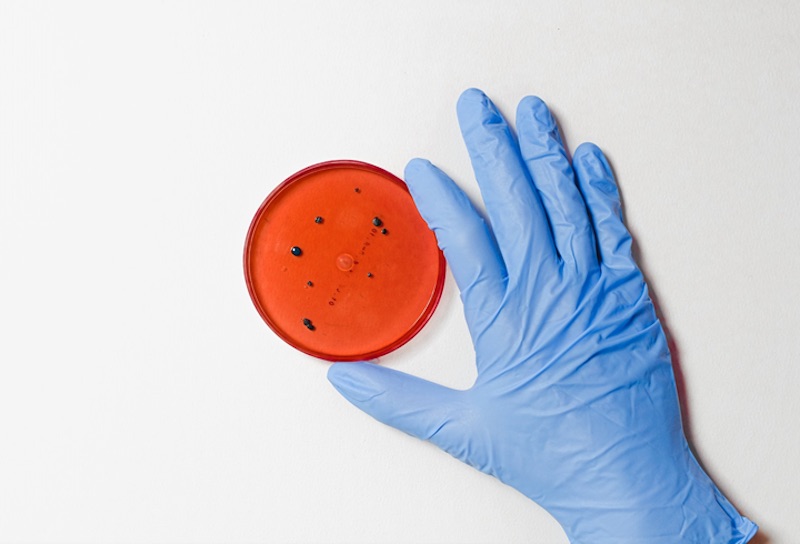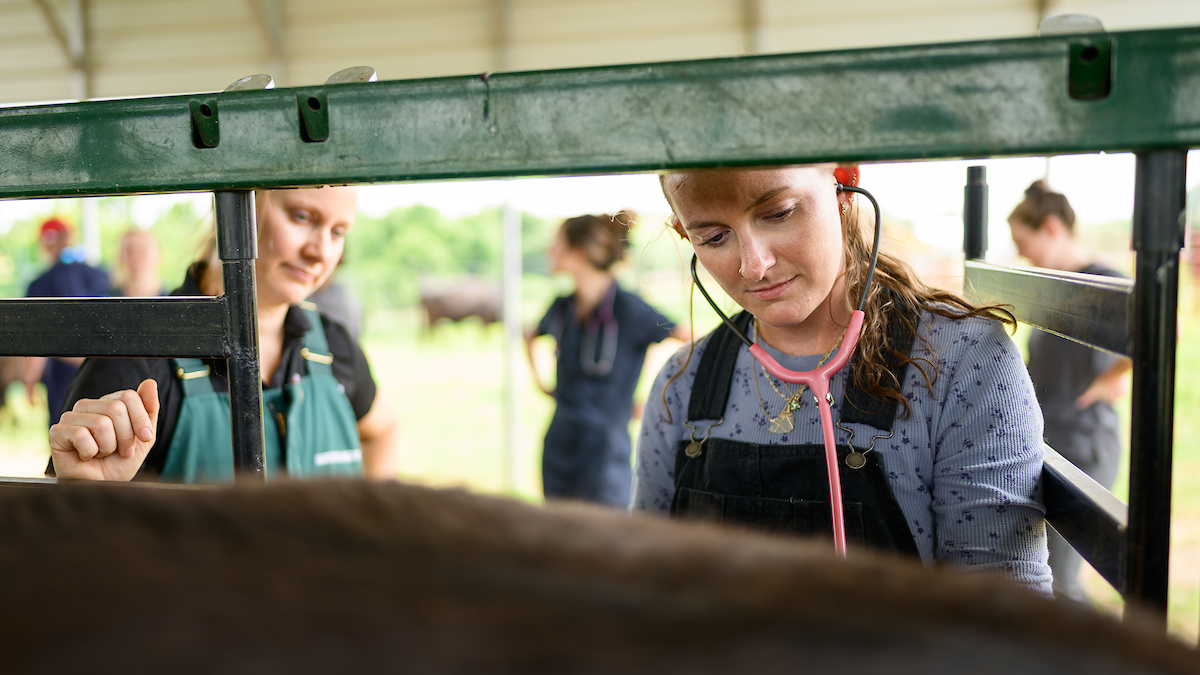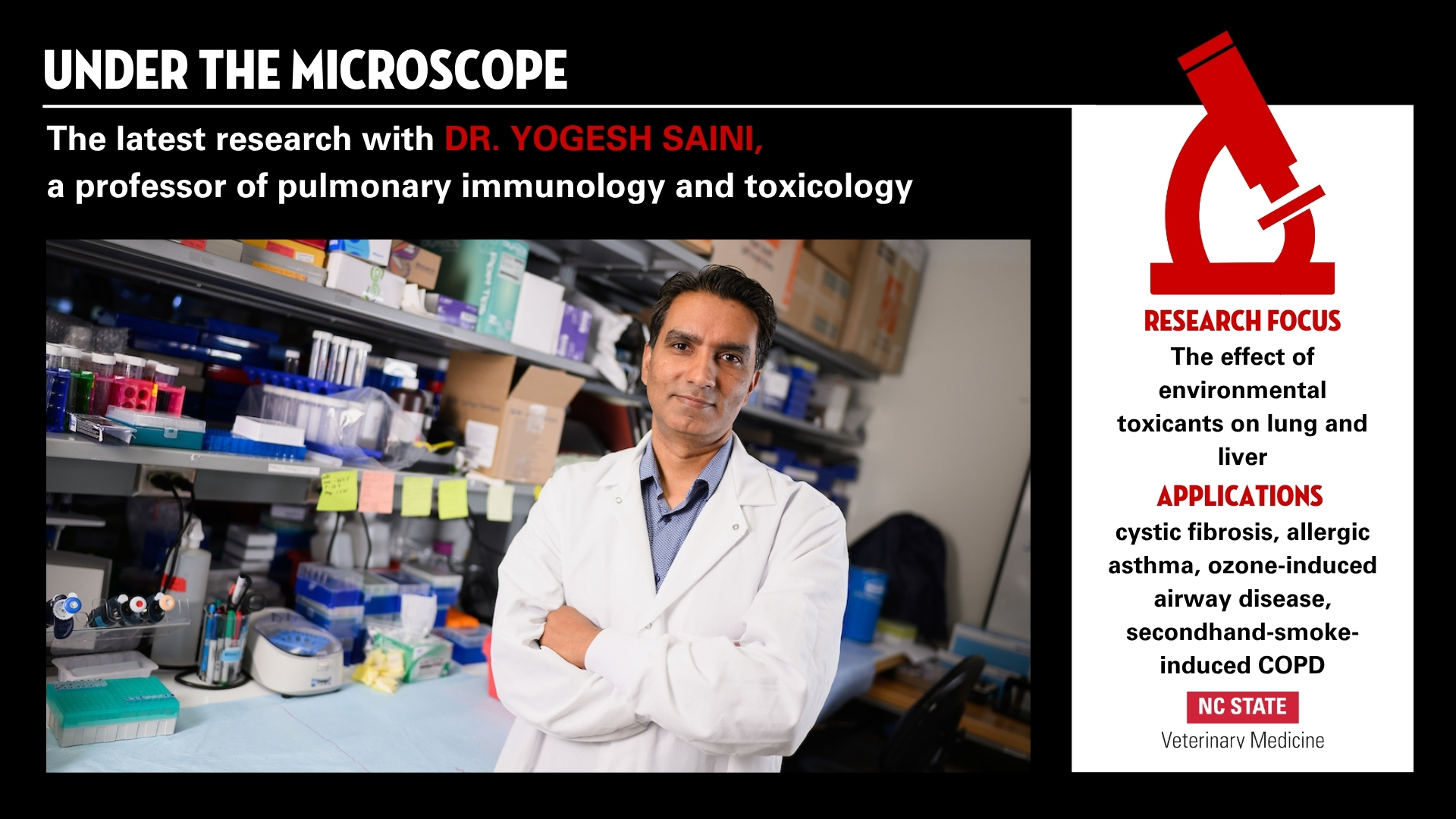Stepping Back To See Antimicrobial Resistance’s Big Picture

We know a lot about antimicrobial resistance, but understand even less.
We know how it moves across farms, between animals, people and borders, and we also know how to track it. We know it doesn’t discriminate, impacting wealthy cities and impoverished nations, and we don’t have a universal approach to stop it. We know how we can eliminate using certain antibiotics that contribute to resistance, but we know resistance can further develop through natural genetic mutations.
But we don’t know the biggest question: Why?
A new research project led by the NC State College of Veterinary Medicine is taking a new approach — stepping back to basics to uncover why antimicrobial resistance (AMR) continues to be a problem despite tremendous efforts to limit it. ever developed in the first place.
The study, led by Annie Wang, a dual DVM/Ph.D. student at the CVM, is investigating the epidemiology of antimicrobial resistance in natural pathogen populations by pinpointing potential evolutionary and ecological factors in its development.
Uncovering such information can provide a world of insight into AMR, leading to more effective prevention strategies and antimicrobial stewardship practices.
Wang recently received an F30 fellowship grant for the project from the National Institutes of Health, recognizing promising, innovative science and supporting training for clinical scientists like Wang working to improve public health.

“We’re advocating that we need to incorporate ecology and evolution when we’re trying to evaluate antimicrobial resistance because it is such a dynamic system,” says Wang. “There are so many different, unique mechanisms that can affect AMR in one context that won’t affect it in another context.
“Our methods are aiming to really get at how we can develop a method that’s useful for all of these different contexts to understand what’s driving resistance.”
For the project, Wang is using years of existing Campylobacter coli samples from commercial swine herds in North Carolina as an AMR model system. It’s intriguing and valuable data: the same 30 pigs from 18 different farms were followed from birth to death. Their exact exposures, antibiotic intake and vaccination histories are known, as is what they were fed and how their spaces were cleaned.
Previous findings from the samples show that in the bacteria Campylobacter, equal levels of resistance to macrolide antimicrobials was found in pigs that were never exposed to antibiotics compared to those with a history of antibiotic intake. That was the case for several generations of pigs on the farms.
That is surprising: It’s commonly thought that if you don’t use antibiotics, you’re probably not going to see high levels of resistance.
“And this is not the only case that this has been detected. There are resistant bacteria isolated from areas that have never been exposed to antibiotics imposed by people,” says Wang. “It highlights that it’s not as straightforward a system as one might expect. It’s not as simple as just don’t use antibiotics, then this won’t be a problem.”
The findings highlight the central crux of Wang’s research: the need for more methods to fully understand AMR and to put it in an evolutionary and ecological context.

Wang is using an array of non-traditional, computational methods to analyze the data, which are being developed in the laboratory of Cristina Lanzas, CVM associate professor of infectious disease and Wang’s fellowship grant co-sponsor. Among them: graphical models to analyze associations among phenotypic AMR data in the population of C. coli isolates.
“A big point of my grant would be that we need better analytical methods because the traditional methods in epidemiology are really great and powerful and robust for certain systems that are less chaotic, but AMR is a complex system,” says Wang.
The goal: developing a quantitative framework integrating ecological and evolutionary principles to advance knowledge of the AMR risk among human and animal populations. Ideally, the framework taken from the pig model could be applied to any host-pathogen system threatened by AMR.
Wang is uniquely suited for the project. Motivated by a keen, long-held interest in global public health, she holds a bachelor’s degree in ecology and evolutionary biology and a master’s of public health in epidemiology.
As a Ph.D. student at the CVM, she’s supervised by Lanzas, whose research focuses on the epidemiology and ecology of antimicrobial-resistant pathogens in animal and human populations. Her other supervisor and fellowship co-sponsor is Sid Thakur, the director of global health at the CVM and NC State who specializes in molecular epidemiology of infectious pathogens (the samples and whole genome sequencing of the pathogens from the pigs were collected by Thakur’s lab).
Underscoring the project’s benefit to humans — over 60% of emerging infectious diseases in humans today originated from animal populations — Wang has a third co-sponsor: Chris Woods, a professor of medicine and global health and executive director of the Hubert-Yeargan Center for Global Health at Duke University.
Wang worked with Woods for a previous research project in Sri Lanka, investigating AMR in intestinal bacteria among small-scale farm livestock and humans, which was part of the CVM’s certificate in global health program. And while pursuing her MPH degree, Wang researched the transmission of zoonotic pathogens among livestock, humans and the environment.
“What I found in NC State was a place that could support what I wanted to do,” says Wang. “I wanted to be able to more powerfully inform what was happening based on the evidence.”I have had an opportunity to conduct meaningful, interdisciplinary research at NC State that can make a broad impact.”
Wang has three more years at the CVM on her plate. She enrolled in 2016 and completed two years of the DVM program before switching over to working on her Ph.D. full time. She anticipates wrapping up her Ph.D. in 2022, followed by the final two years of her DVM, graduating in 2024.
As a veterinary scientist, she’ll go out into a world that needs her in the fight against AMR’s silent but devastating threat.
“COVID-19 might be the big fire of today, but antimicrobial resistance is here — and will still be here,” says Wang. “It’s a problem that’s not going away. It’s getting worse. It’s a complex problem that requires complex solutions.”
~Jordan Bartel/NC State Veterinary Medicine


